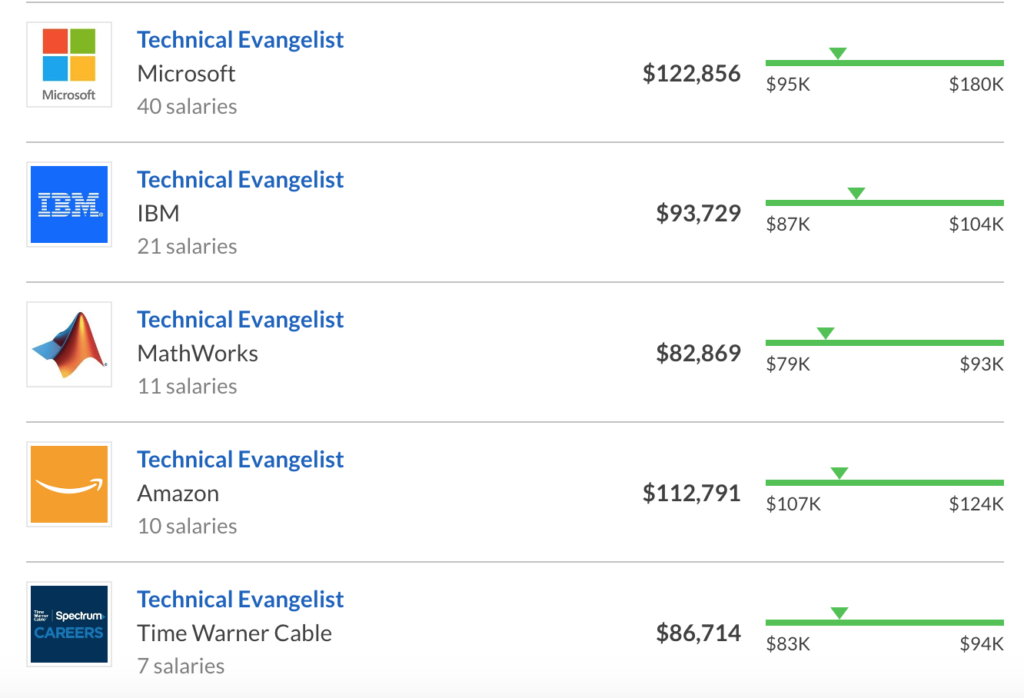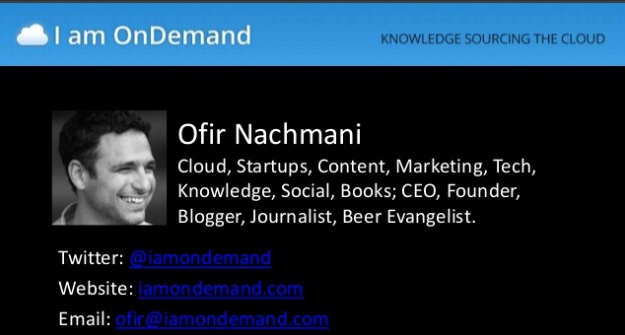Two questions I get asked quite often are:
- How did you get to be where you are with your blogging? You’re not a native English speaker, nor a trained writer….
- What kind of name is “iamondemand?”
So I figured it’s time to share my story.
The Story Starts Like This
Ten years ago, a company I co-founded was acquired by ClickSoftware (CKSW). At the time, I was the general manager of the company’s Tel Aviv office, which included the R&D and operations teams. (You should read more about ClickSoftware’s journey. Especially those of you just discovering cloud, you might find it interesting to learn what it meant to adopt the public cloud back in 2011.)
After four years of hard work and great uncertainty in a tiny organization, the transition to the larger company was a harsh wakeup call for younger Me, especially as I learned that the lean and fast method we employed as a small organization wasn’t how the rest of the corporate world behaved.
Soon after the acquisition, I was called to the CEO’s office. There, members of the management team asked me to help educate the company on cloud-related topics, such as “what is multi-tenancy when it comes to the database,” and “how sales can make these small deals of $150/user,” as well as other cloud-related topics including R&D, support, marketing, and sales. The IT department already had its first few instances on AWS thanks to one of the early cloud adopters, Dan Feld, CIO of the company at the time, but they needed someone to focus singularly on helping educate the company on the transition of the core software offerings to Amazon cloud.
I was thrilled for this opportunity, but when it came time to assign an official title to this role, I wasn’t sure what to call it. Titles had never really mattered to me — I was always more concerned about my responsibilities — but in this new online world where people searched LinkedIn to find an organization’s point of contact, I knew that I needed an official title. I wasn’t a VP or a director, but I also wasn’t a “senior something.” And then it struck me—tech evangelist, or even better, cloud evangelist.
Purchasing My Domain
I was “born in the cloud.” I hate legacy applications. At ClickSoftware, one of my responsibilities was to share the knowledge I gained with the entire company. I was instructed to do so using the company sharepoint, but I couldn’t stand it, so I took the advice of my good friend Eden (now, a celebrity chef) who told me she was using Tumblr for her small blog. Subsequently, I created my own micro blog on Tumblr, and purchased the domain “iamondemand.com.”
So why did I chose iamondemand.com? Really it was in response to a nickname: my colleagues at ClickSoftware called me “Ofir on-demand” because I pushed and evangelized the company’s new on-demand cloud service.
As the company’s cloud evangelist, I created and posted articles on Tumblr and then put links to those articles onto the company sharepoint. When I started blogging about cloud, I never thought I would end up becoming one of the top 100 cloud computing experts. But when I received a consulting request from a venture capitalist, I realized the value of what I was doing and how creating a personal brand would advance my career.
From In-House Evangelist to Professional Blogger
It took me a little while to feel confident and secure in my content offerings, but I quickly learned that the most important key to tech blogging success was thinking up interesting topics, choosing somewhat sensational titles, and publishing on a weekly basis. And, just as it is with running or any form of exercise: do it, and do it consistently.
And it worked. Soon I was blogging on the side in addition to the content I was creating and sharing with the company.
Soon my audience started to grow. One way I expanded my audience was by reaching out to people of interest in the field for interviews. Nati Shalom, the founder and CTO of GigaSpaces, was one of the first. I interviewed him about cloud vendor lock-in.
Not only did I a learn a lot from the discussion with Nati, but I also learned how to conduct future interviews more strategically. For instance, prepare questions carefully in advance, listen closely while my interviewee spoke, and record the entire discussion so I could pay attention during our conversation and not be consumed by note-taking. All of these things probably seem glaringly obvious for those of you who are professional journalists, but for those of us who aren’t, these were important lessons to learn.
I started to attend local events, too. I figured out that my experiences at these events would produce interesting topics to write about. Back then, I never read about blogging best practices; I just tried new things. Sometimes the things I tried worked out, and sometimes they didn’t. One time it didn’t work out was when I spent three months researching and writing an article that, in the end, only attracted a few readers.
Over time, I understood that while native English isn’t a “must” in order to successfully write English blogs, I could sound a lot more professional if I hired an editor to clean up my draft. So I did. I also worked with a graphic designer to create a logo and help me better design my blog.
A Social Animal
Marketers will say (for good reason) that creation is only half the battle; distribution is the other half.
Certainly distribution is important, but high-quality long-form content alone can multiply your traffic by tens. I’ve seen it happen for many of our customers.
That said, Twitter really did help me solidify my online presence. There, I was able to communicate directly with influential professionals in the industry, such as tech evangelist Adrian Cockroft. In addition, I started to extend my reach through LinkedIn. Today, I have more tens of thousands of connections and followers in the social worlds of B2B tech and cloud alone.
As an evangelist, you need to be present online every day, promoting both your own interests and the interests of others, especially those who you know personally and will return the favor with a share and a like. These are obvious marketing tactics, but what might not be so obvious is that a successful tech evangelist needs to run quality online discussions, and better yet, arguments and debates. When I was first starting out, for instance, the most popular discussion was surrounding the hybrid cloud. I spent many hours holding discussions with multiple cloud gurus.
Final Notes: The Tech Evangelist Is the Coolest Geek
In case you don’t know him already, this is Jeff Barr, Amazon cloud’s chief evangelist.  This picture is in black and white, but his hair is actually bright purple—and just look at his Hawaiian shirt.
This picture is in black and white, but his hair is actually bright purple—and just look at his Hawaiian shirt.
The tech evangelist is the coolest geek in an organization.
The evangelist has the most reliable and important function in today’s marketing world, specifically in the world of tech. The largest brands in the world, including Microsoft and Amazon, have a designated in-house evangelist position. And, unlike most marketing positions, the candidate must have actual tech experience and the ability to easily explain (even without preparing in advance) the value of a sophisticated product capability they have just seen for the first time. This technical competence makes the evangelist a trustworthy source of information for the target audience.

In addition to being knowledgeable, the tech evangelist must also be transparent. Some say that evangelists shouldn’t be too “salesy,” but I believe that if the evangelist truly stands behind their words, they should promote the organization’s product—and if they don’t believe in the product, they should say so. The evangelist also serves as a connector, not only in terms of networking between people, but also leverage his/her vast network, in terms of connecting businesses that have certain challenges with the vendors with the right technology to fix them.
To be a successful tech evangelist, you have to be authentic: you must truly want to help people be successful, not just try to sell them something. You have to be a trusted advisor, which means being transparent and upfront about any possible biases that you may have. It means telling the whole truth 100% of the time—nothing you say or write should be any less true if you were working for a competitor. Really being a tech evangelist is about connecting people with products, technology, and knowledge they need to succeed.






